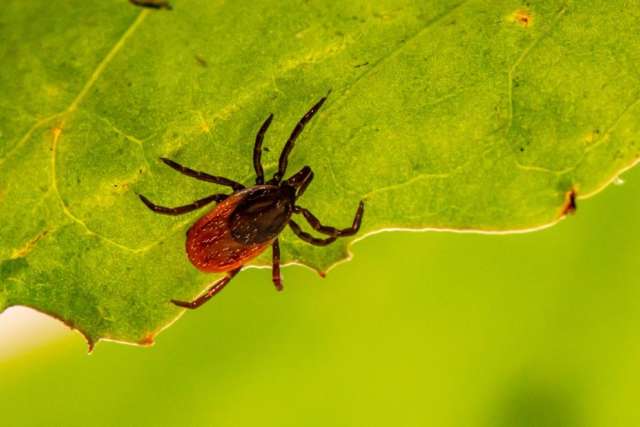Dear Doctors: Ticks are a big problem where we live in Pennsylvania. Our family loves being outdoors, so staying away from tick territory isn’t an option. One thing I really want to know is the right way to remove a tick when you get bitten.
Dear Reader: We’re glad to get this question because, as we said in our column last week, the United States has seen a surge in reports of tick bites and tick-borne illnesses in recent years. This is due to heightened awareness, an increase in tick populations and an expansion of their range. At the same time, the easing of pandemic constraints has led to an increase in outdoor activities. The upshot is that more people are encountering more ticks than ever before.
Ticks bite mammals because they require a blood meal to advance through each of their three stages of life. To complete their two- to three-day feed, they are outfitted with a trio of complex mouthparts. These include telescoping rods, hooked teeth and a “straw” lined with backward-facing barbs through which it sips blood. The tick uses its mouthparts to pierce the skin, latch on and bury its head. You don’t feel the bite due to painkillers in the tick’s saliva. The point of all this (unsettling, we know) detail is to help you understand what you’re working to undo as you remove a tick.
The goal in extracting a tick is to pull its head out of the flesh without damaging or squeezing its body. The best tool for this is a pair of tweezers with pointy ends. These give you a precise grip and good leverage. Start by washing your hands and sterilizing the tweezers with rubbing alcohol. Then place the slender tips of the tweezers as close to the skin as possible, on either side of the tick’s head. Gently pull up, using steady and even pressure. You’re pulling those backward-facing barbs from the skin. Be sure not to twist, turn or jerk as you pull or the head, or mouthparts might be left behind in the skin. Once the tick is free, check that it’s whole. If undamaged, its legs will move. If the tick breaks and you can’t retrieve the head or the mouth, it is advisable to seek medical help to remove it.

Wash the bite thoroughly with soap and water. Secure the tick in a plastic bag or bottle so that, should you develop symptoms in the next 30 days, it can be examined. Tick-borne diseases can have similar symptoms, including fever, chills, rash, nausea or vomiting, fatigue, headache and body aches. Keeping the tick allows it to be examined and a specific virus or bacterium to be identified, and then the appropriate treatment can be prescribed.
Meanwhile, take precautions. In wooded areas, wear long pants and long sleeves, and tuck in your shirt and pant cuffs. Light colors make ticks easier to spot. Use insect repellent with 20% to 30% DEET on clothes and exposed skin. Be sure to follow the product instructions. End all outdoor activities with a thorough tick check.
If you have been bitten by a tick and develop symptoms, it’s important to seek medical care.
(Send your questions to [email protected], or write: Ask the Doctors, c/o UCLA Health Sciences Media Relations, 10960 Wilshire Blvd., Suite 1955, Los Angeles, CA, 90024. Owing to the volume of mail, personal replies cannot be provided.)





